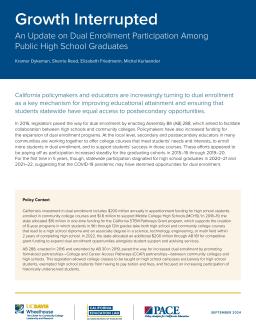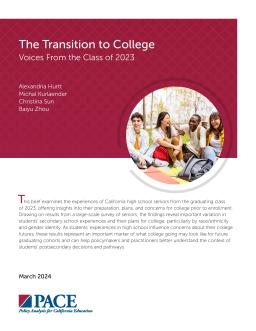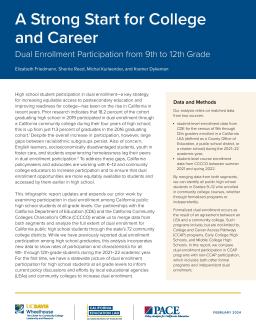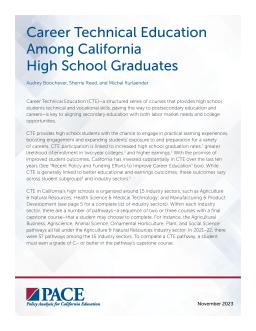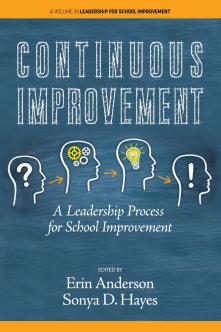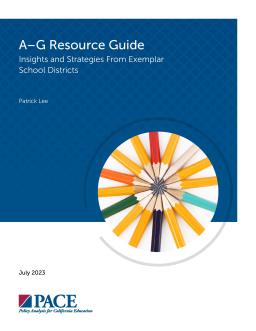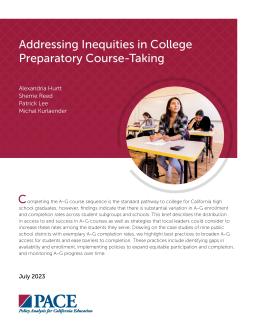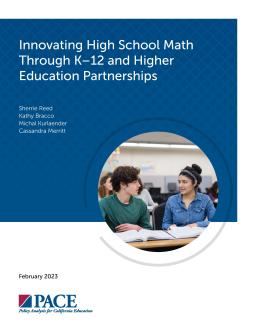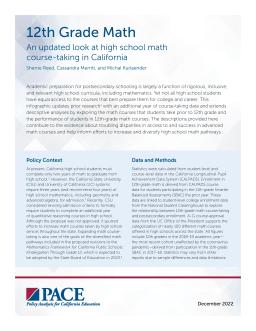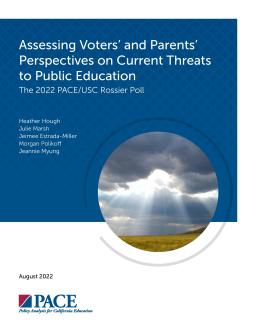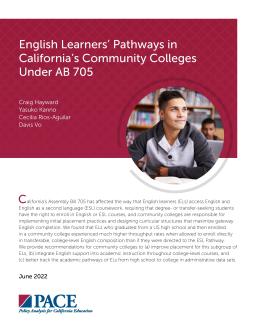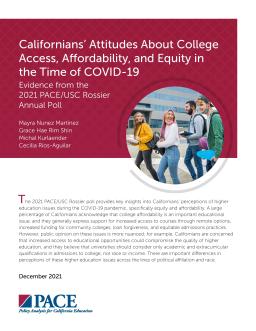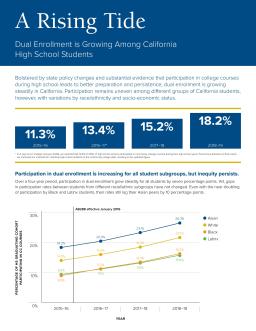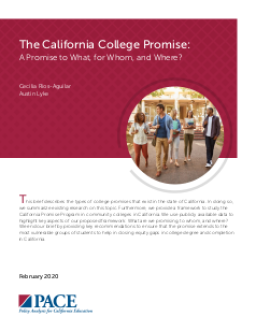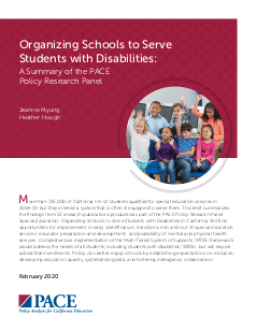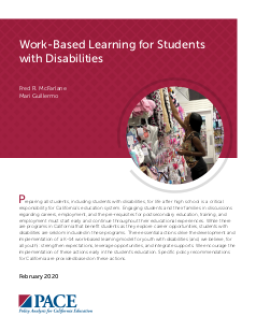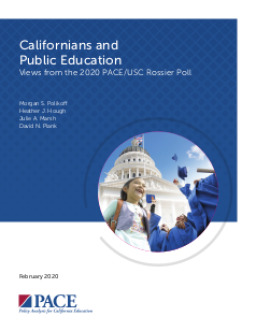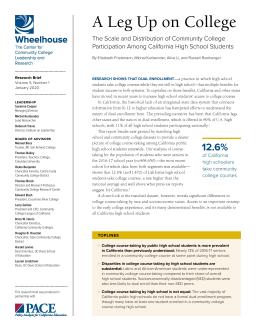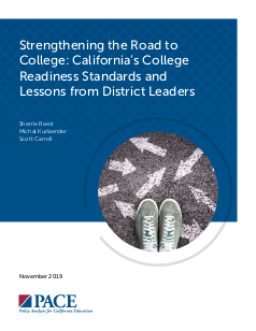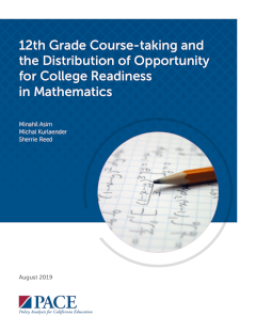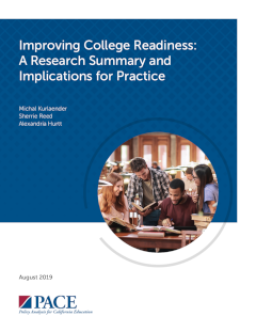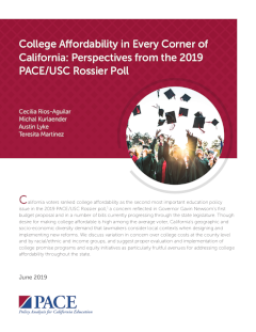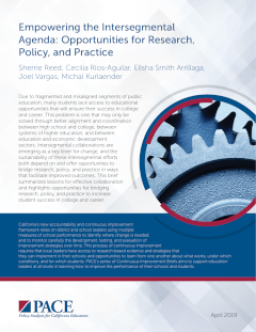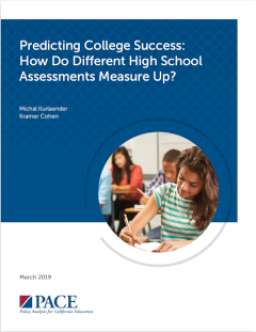Summary
California policymakers and educators are promoting dual enrollment to boost educational attainment and equal access to postsecondary opportunities. Assembly Bill 288, enacted in 2016, encouraged high school-community college collaboration, and funding for dual enrollment has increased. Local educators are working to expand programs and support student success. Participation grew steadily from 2015–16 to 2019–20, but stalled in 2020–21 and 2021–22, likely due to the COVID-19 pandemic's impact on dual enrollment opportunities.
Summary
Summary
This infographic, from PACE and Wheelhouse, examines participation in dual enrollment among 9th to 12th graders. The data show that about 10 percent of all California public high school students enrolled in community college courses in 2021–22, but these rates vary from zero to 97 percent depending on locality. Analysis demonstrates that dual enrollment participation is unequally distributed across racial/ethnic and socioeconomic groups as well as geography. The evidence demonstrates the potential of improving early access to dual enrollment in 9th grade for closing these equity gaps.
Summary
Summary
Summary
Summary
Summary
Summary
Summary
The 2021-22 academic year in California was challenging for public education due to eight issues that threaten student learning, schools, and public education itself, including gun violence, declining enrollment, and long-term funding inadequacy. These issues also have a disproportionate impact on marginalized communities and highlight long-standing systemic inequities. In July 2022, PACE and USC Rossier School of Education conducted a poll of California voters to determine their views and priorities on public education.
Summary
Summary
Summary
Summary
Summary
Summary
Students with disabilities should be included in programs that prepare them for life after high school. This can be achieved through a K-14 work-based learning model, which involves strengthening expectations, leveraging opportunities, and integrating supports. Early implementation of these actions is encouraged, along with specific policy recommendations for California.
Summary
Summary
In the run-up to 2020 elections, where do California voters stand on key education policy issues? This report examines findings and trends from the 2020 PACE/USC Rossier poll. Key findings include rising pessimism about California education and elected officials, continued concern about gun violence in schools and college affordability, and negative opinions about higher education. However, there is substantial support for increased spending, especially on teacher salaries.
Summary
California has sought to increase high school students’ access to college courses through dual enrollment. This brief matches high school and community college datasets, revealing that 12.6% of state high school students take college courses, higher than the national average. However, Latinx and African American students, as well as socioeconomically disadvantaged students, were underrepresented in community college course-taking. The vast majority of California public high schools lack formal dual enrollment programs, limiting access to an important onramp to the early college experience.
Summary
Summary
Summary
Summary
College affordability was ranked as the second most important education policy issue in the 2019 PACE/USC Rossier poll. Governor Newsom’s budget proposal and several bills in the state legislature reflect this concern. The diverse geography and socioeconomic status in CA demand local context consideration for designing effective reforms. Variation in concern over college costs is discussed by county and income and racial/ethnic groups. Proper evaluation and implementation of college promise programs and equity initiatives are suggested as fruitful avenues for addressing college affordability.
